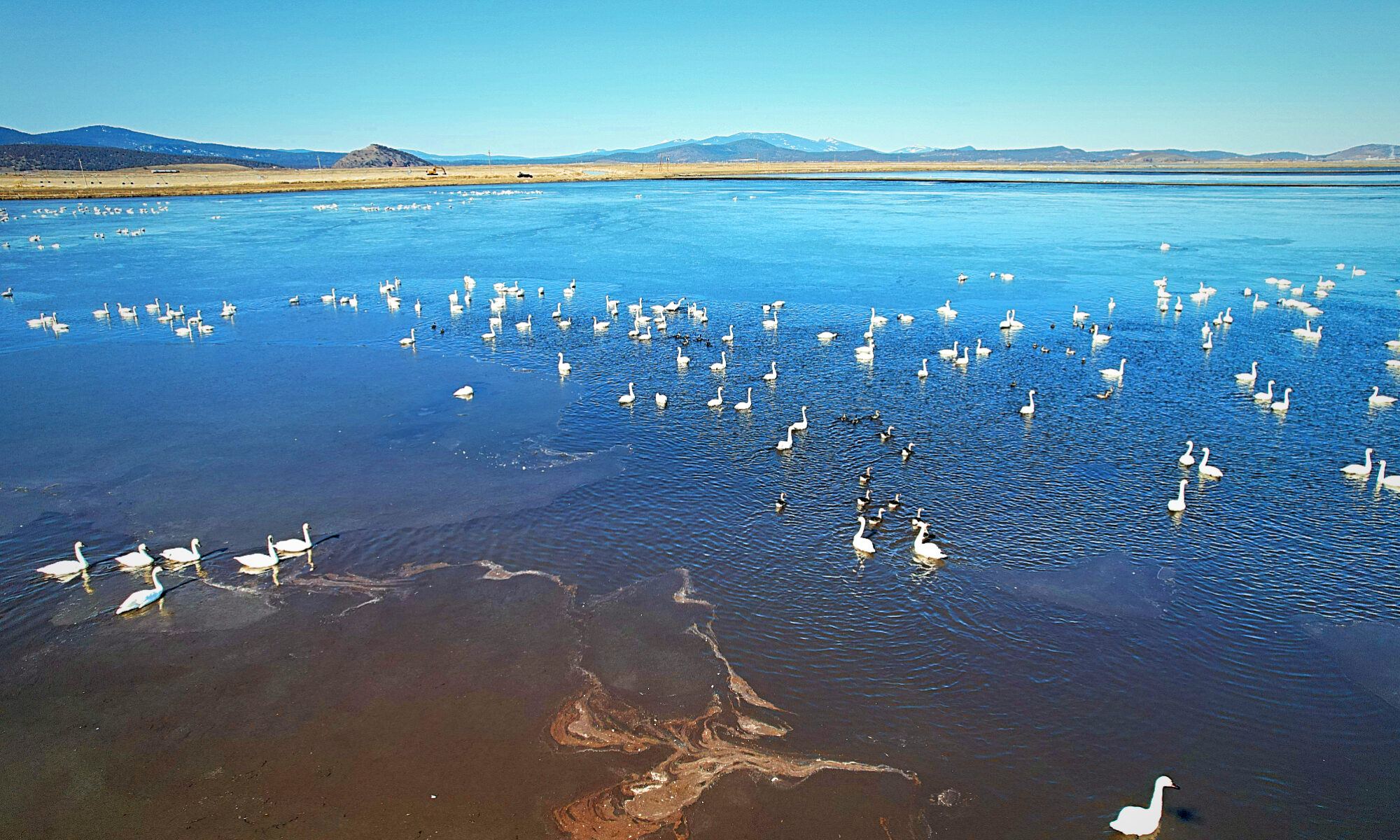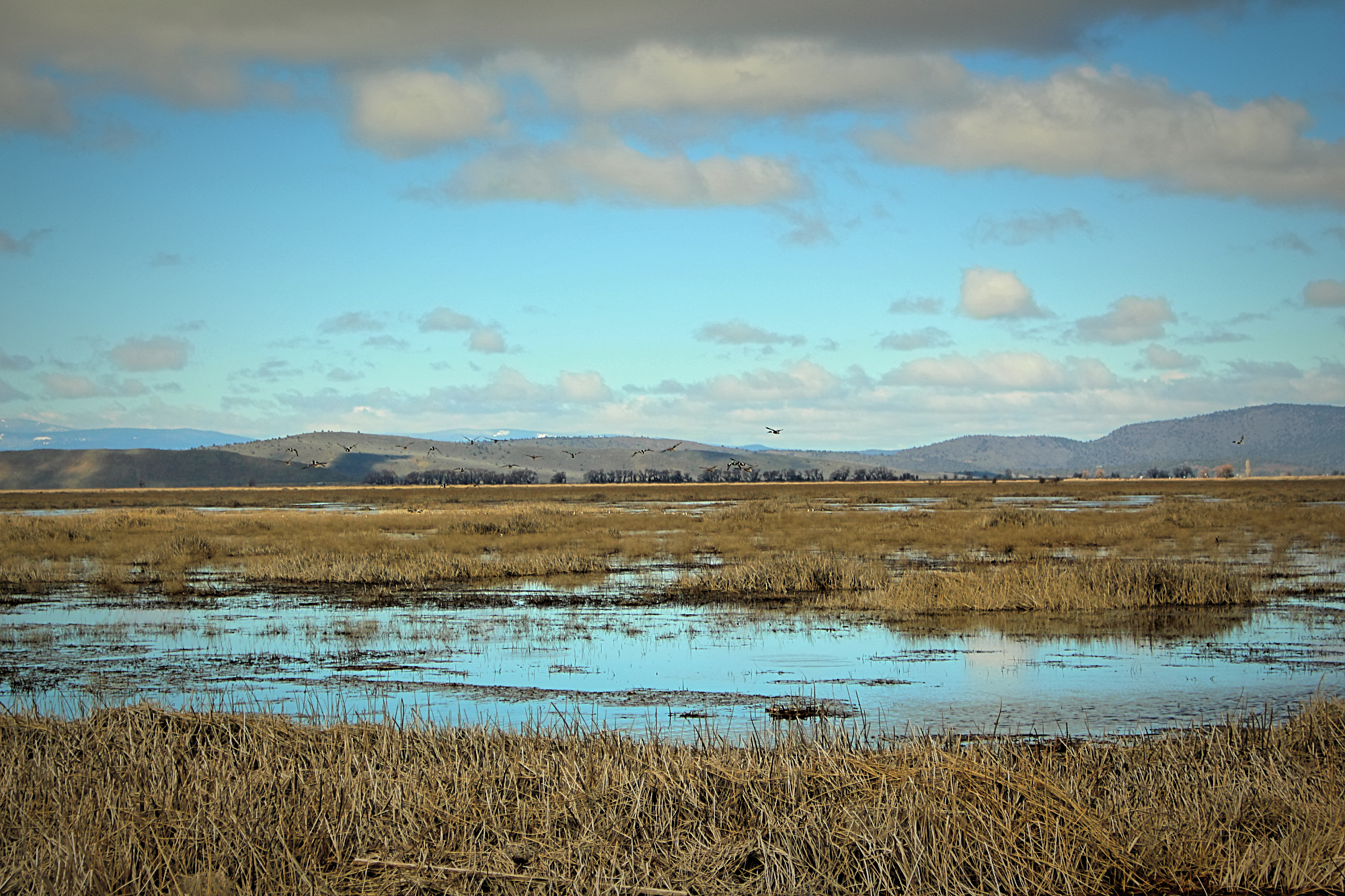During irrigation season, it’s not uncommon to see white pickups with long poles jutting from the bed and over the cab as they make their way throughout the Klamath Basin to ensure water is being delivered to farms and ranches.
In the winter in the Klamath Irrigation Project, you’ll find fewer pickups bouncing down ditchbanks and along canals. Instead, you’re more likely to see backhoes and excavators perched along waterworks.

That doesn’t mean work slows down for Klamath Project irrigation districts.
According to Klamath Irrigation District (KID) district manager Gene Souza, the district’s winter operations and plans are the results of “careful thought and hard lessons learned.”
Within KID are over 200 miles of canals and 200 miles of drains that provide water for over 40,000 acres in its district, 7,000 acres of individual Warren Act contracts, and another 10,000 acres for lands under the Klamath Basin Improvement District.
KID fall/winter operations start at the end of the irrigation season. A 30-day “sluffing off” period allows the canals to slowly draw down to prevent collapsing, followed by “ratting” to fix problems caused by burrowing animals and inspections to identify emergency repairs and prioritize the maintenance and repair list.
On that list are a variety of standing projects, including repairs to roads, bridges, and canals, fish-screen cleaning, replacing actuators on the A Canal Headworks, building turnouts, piping problem

sections of the canals, and much, much more.
Even with this week’s snow fall, KID’s crews were anything but idle.
According to Souza, “This week (the week of February 10th) we have had the crews, when the roads allowed, to focus on HQ maintenance and pouring concrete turnouts instead of cleaning drains and repairing bridges.”
But the most dramatic project KID worked on was repairing a mile-long tunnel that runs under Klamath Falls.
The original tunnel was built in 1904, but abandoned by the Bureau of Reclamation and then redug in 1906. Over the decades, the tunnel received a concrete lining to preserve its integrity and a new floor was poured in the 1980s.

However, since 2021, KID’s inspection crews noticed more repairs were needed to the walls and ceiling of the tunnel. If the tunnel failed, the disaster would affect citizens in Klamath Falls as well as the farms served by the A Canal.
When funds from the Federal government failed to materialize, Souza made the decision for the district to fund its own solution. The result was KID’s board approving a budget to address the areas of concern in the tunnel.
“To make it a more lasting 50+ year solution,” said Souza, “we put extra expense into applying a hydrophobic layer of shotcrete to the areas of the walls that come into contact with water.”
In spite of the challenges winter presents the irrigation districts – especially a wet, snowy one like the Klamath Basin is experiencing – the district manager still appreciates the moisture.
“Snow is always welcome . . . even when it slows us down,” said Souza.
For the Klamath Drainage District (KDD), winter brings its own set of challenges. But according to district manager Scott White, there isn’t much of a shift from irrigation season to winter operations.
“Since we have a year-round water right, our single purpose for delivering water is to make sure it is available for our landowners whenever they need it,” said White. “So that means making sure our canals have water in them and our delivery systems are operating properly.”

Similar to KID, maintenance and repairs are an important part of winter operations. But water delivery remains the district’s top priority.
The 27,000 acres served by KDD have a unique water right that allows the district to take water from the end of the irrigation season (usually around October) through the winter months. This water right helps the district – and the Klamath Project – operate as it was originally designed and helps the Lower Klamath area operate in a manner inline with how it did naturally.
From maintaining soil moisture that makes its growers less reliant on spring and summer irrigation to managing pest and weeds that benefits KDD’s organic farmers, this water right is hugely beneficial to the district’s patrons. And for wildlife, the district’s flooded fields provide “key habitat for migratory birds in the fall/winter and even the early spring.“
For KDD’s crews, this means making sure pumps and pumping stations are operating properly, checking water quality, and ensuring headgates and turnouts aren’t being slowed or blocked by ice. As noted by White, winter operations are similar to irrigation season, with ice replacing weeds and moss.
Another challenge for the district is when the farms request the fields to be drained for spring.
“I do worry about our landowners wanting to drain all at once but I do not have that sense at this time,” said White. “Furthermore, with the hard freeze we’re having, the ice will not allow massive drainage, so we may be ok without having to ask our landowners to slow down or take turns.”

During this time of year, KDD is also responsible for ensuring that the Klamath Basin Refuges Lower Klamath National Wildlife Refuge receives water as requested per the refuge’s water right. And if there’s drainage water available, the district can elect to send it to Unit 2 of the refuge versus down the Klamath River.
When asked more about the benefits of the district’s winter operations, White answered, “We have tremendous opportunities to utilize Lower Klamath for the benefit of the Project, the refuges, and the entire Basin from an operational perspective. The sooner folks begin realizing the potential of Lower Klamath, the better off we all will be in managing the water for species, habitat and growing food.”
To learn more about KID and its operations, you can follow the district on Facebook at https://www.facebook.com/profile.php?id=61556457663521 (or search for “Klamath Irrigation District” on the platform.) You can also keep up to date on their website, https://klamathid.org/.
For KDD, you can follow the district on Facebook at https://www.facebook.com/KlamathDrainageDistrict or visit their website at https://klamathdrainagedistrict.org/.




























































